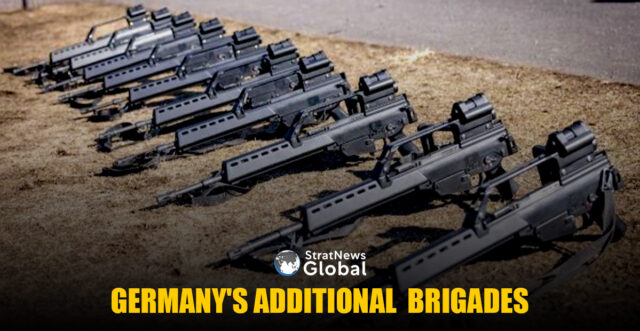NATO plans to ask Germany to contribute seven more brigades—amounting to around 40,000 troops—as part of updated targets for military personnel and equipment, according to sources. The proposal is expected to be discussed by the alliance’s defence ministers at a meeting next week.
The alliance is dramatically increasing its military capability targets as it views Russia as a much greater threat since its 2022 full-scale invasion of Ukraine.
Exact figures for NATO’s targets – either overall or country by country – are hard to verify as the information is highly classified.
One senior military official who, like the other sources, spoke on condition of anonymity, said the target for the total number of brigades that NATO allies would have to provide in future will be raised to between 120 and 130.
50% Hike
This would mean a hike of some 50% from the current target of around 80 brigades, the source said. A government source put the target at 130 brigades for all of NATO.
Neither the German defence ministry nor NATO responded immediately to requests for comment.
In 2021, Germany agreed to provide 10 brigades – units usually comprising around 5,000 troops – for NATO by 2030. It currently has eight brigades and is building up a ninth in Lithuania to be ready from 2027.
Providing a further 40,000 active troops will be a big challenge for Berlin, however. The Bundeswehr has not yet met a target of 203,000 troops set in 2018, and is currently short-staffed by some 20,000 regular troops, according to defence ministry data.
According to last years’ reports, NATO would need 35 to 50 extra brigades to fully realise its new plans to defend against an attack from Russia and that Germany alone would have to quadruple its air defence capabilities.
Furthermore, the new NATO targets do not yet reflect any provisions for a drawdown of U.S. troops in Europe, sources said, the prospect of which has rattled Europeans due to NATO’s defence plans that rely heavily on U.S. assets.
Washington has said it will start discussing its reduction plans with allies later this year. U.S. President Donald Trump’s administration has told Europeans that the United States can no longer be primarily focused on European security.
During the Cold War, Germany maintained 500,000 troops and 800,000 reserve forces. Today, alongside Poland, it is tasked by NATO with providing the bulk of ground forces that would be first responders to any Russian attack on the alliance’s eastern flank.
Spending Increase
NATO members have massively increased defence spending since Russia’s full-scale invasion of Ukraine in February 2022 and have been urged to go further by Trump, who has threatened not to defend countries lagging behind on defence spending.
At a summit in The Hague next month, the alliance’s head Mark Rutte will seek an agreement from national leaders to more than double their current spending target from 2% of GDP to 5% – with 3.5% for defence and 1.5% for more broadly defined security-related spending.
In a historic shift, Germany recently loosened its constitutional debt brake so that it can raise defence spending, and it has backed Rutte’s 5% target.
German Chief of Defence Carsten Breuer has ordered his country’s forces to be fully equipped by 2029, by which time the alliance expects Moscow to have reconstituted its military forces sufficiently to attack NATO territory.
(With inputs from Reuters)





